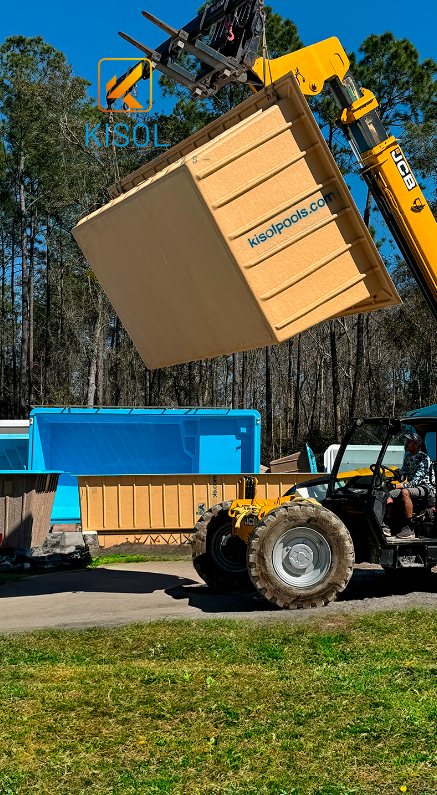Installing a fiberglass pool yourself can be an exciting and fulfilling project. Not only does it allow you to save on installation costs, but it also gives you the satisfaction of completing a significant home improvement task. However, as with any DIY project, there are challenges you might face along the way.
To help ensure your pool installation is a success, we’ve outlined some common pitfalls to watch out for and tips on how to avoid them.
1. Improper excavation:
One of the most critical stages in installing a fiberglass pool is the excavation process. Getting this step right is crucial to ensuring the pool shell fits perfectly and functions as intended. Here are some key considerations:
– Follow the dig sheet: Your pool kit will come with a detailed dig sheet that outlines the exact dimensions and depth required for your pool. It’s essential to follow this guide closely. Deviating from the specifications can lead to issues such as the pool shell not fitting correctly or being unstable.
– Ensure a level base: The excavation must be level. A hole that’s uneven can cause the pool shell to settle incorrectly, leading to potential structural problems. Using a laser level or hiring a professional to assist with this step can help achieve the desired accuracy.
– Consider professional help: If you’re unsure about handling the excavation yourself, consider hiring a professional. While this might add to the cost, it can save you time and prevent costly mistakes.
2. Inadequate backfill:
Once your pool shell is in place, proper backfilling is essential to maintain the stability and longevity of your pool. Here’s what you need to know:
– Use the right material: Backfill material should be chosen carefully. Typically, clean, crushed stone or gravel is recommended as it provides good drainage and support. Avoid using soil or other materials that can shift or settle over time.
– Take your time: Rushing through the backfilling process can lead to uneven settling. Take the time to ensure that the backfill is evenly distributed and compacted to provide consistent support around the pool shell.
– Monitor the process: Regularly check the backfill during the process to make sure it’s settling evenly. This can help identify any potential issues early on and address them before they become major problems.
3. Incorrect plumbing:
Plumbing is another critical aspect of pool installation. Mistakes in this area can lead to leaks, inefficient water circulation, or costly repairs. Here’s how to get it right:
– Understand the plumbing requirements: Familiarize yourself with the plumbing requirements for your pool, including the placement of pipes, pumps, and filters. Your pool kit will provide guidelines, but if you’re not comfortable with the plumbing work, consulting with a professional plumber can be a wise decision.
– Check for leaks: After installing the plumbing, thoroughly test for leaks. This involves filling the pool with water and monitoring the plumbing system for any signs of leakage. Addressing leaks promptly can prevent more significant issues later.
– Ensure efficient circulation: Proper plumbing ensures that water circulates efficiently through the pool and filtration system. This is crucial for maintaining clean and clear water and avoiding potential maintenance problems.
4. Skimping on coping and patio materials:
The finishing touches on your pool area, including coping and patio materials, are not just about aesthetics. They also play a vital role in the functionality and protection of your pool. Here’s what you should consider:
– Choose quality materials: Opting for high-quality coping and patio materials can make a significant difference. While it might be tempting to cut costs in these areas, investing in durable materials ensures that your pool area remains functional and attractive for years to come.
– Proper installation: Proper installation of coping and patio materials is crucial. This includes ensuring that the coping is securely attached and that the patio is properly graded to prevent water from pooling near the pool.
– Consider long-term maintenance: High-quality materials and proper installation can reduce the need for frequent repairs and maintenance. This not only saves money in the long run but also enhances the overall enjoyment of your pool area.
Final thoughts:
Installing a fiberglass pool yourself can be a rewarding experience, but it’s essential to approach the project with careful planning and attention to detail. By being aware of common pitfalls and taking the necessary precautions, you can ensure that your pool installation is successful and that your pool provides enjoyment for years to come. If you encounter any difficulties or feel unsure about any part of the process, don’t hesitate to seek professional assistance. With the right approach, you’ll be able to enjoy the satisfaction of a job well done and the pleasure of your new pool.
Need more guidance on your pool installation project? Contact us for expert advice and support!

